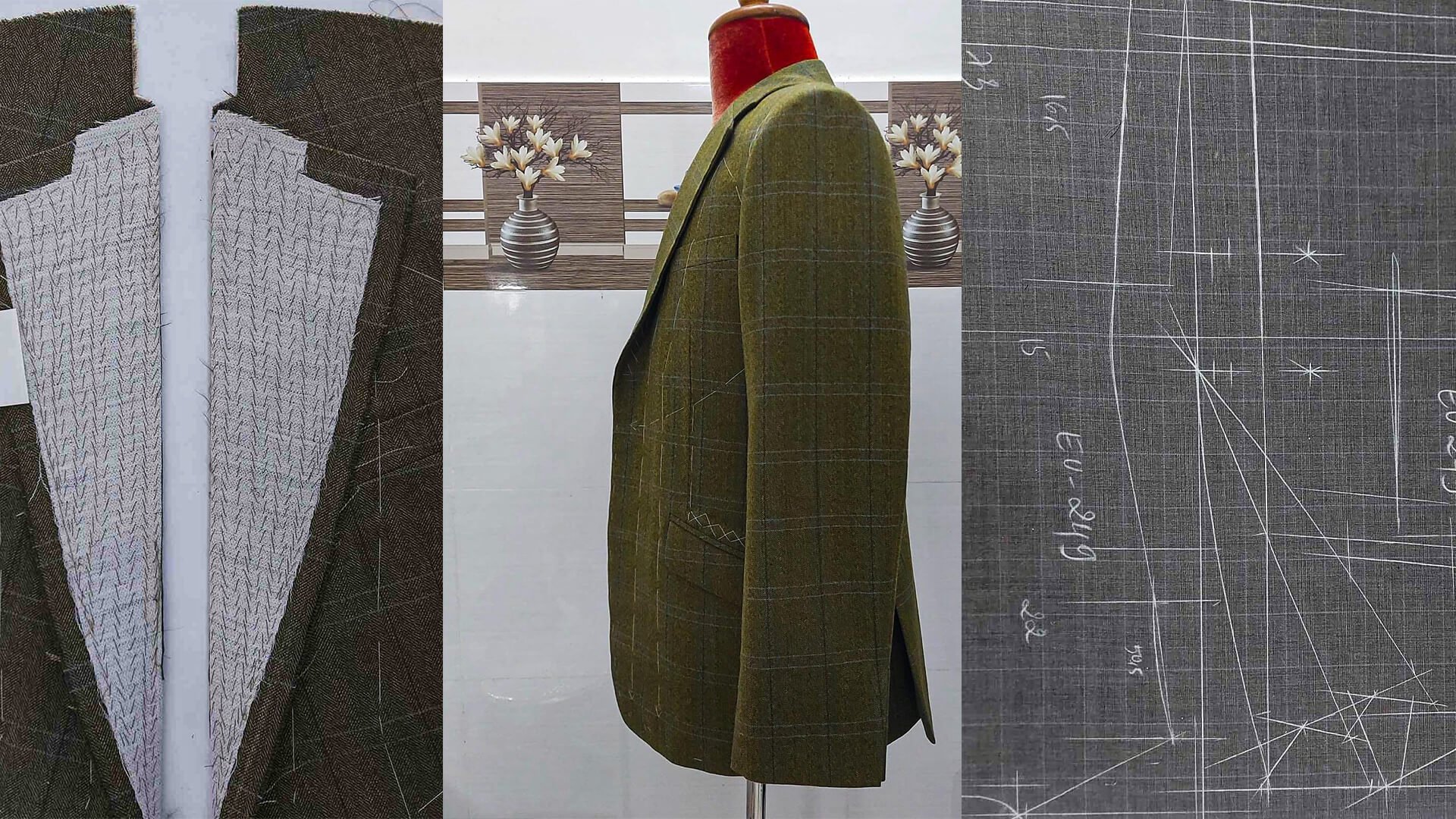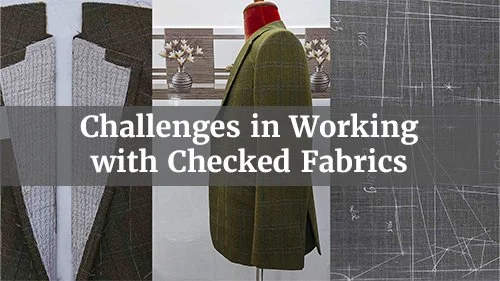
Craftsmanship Aligned:
Why Checked Fabrics Demand the Utmost from a Tailor
Precise Pattern Placement and Cutting
To ensure the checks align perfectly, the pattern pieces must be placed with extreme precision on the fabric. This often means laying the fabric out single-layered rather than folded, giving the tailor full control over the placement of the pattern on the cloth.
Attention to Pattern Continuity
A distinctive feature of this suit is how the check pattern is meticulously aligned — especially at the shoulders, sleeves, and side seams of the jacket. When worn, the lines flow visually, creating a sense of calm, symmetry, and refinement. This is not a given: it requires careful fabric laying, pattern determination, and placement for each part, something only possible through meticulous handwork and experience. Especially with a bold pattern like this Navy Plum Gun Club, the matching of checks is a clear sign of craftsmanship.
Increased Fabric Consumption
Proper alignment of check patterns usually requires more fabric than with solid fabrics. A general rule of thumb is to purchase extra fabric — often double the pattern repeat — to have enough material for accurately positioning the checks.
Complexity of Asymmetrical Checks
Asymmetrical check patterns pose an additional challenge, as they lack mirror-image repetition. This makes it more difficult to align the patterns across various parts of the garment, requiring more planning and precision.
Careful Stitching and Finishing
During sewing, the checks must be joined with great accuracy. This requires careful pinning and possibly the use of special sewing feet, such as a walking foot, to prevent the fabric from shifting during stitching.
The Result: A Masterpiece of Craftsmanship
When a tailor overcomes these challenges successfully, the result is a garment in which the checks flow seamlessly across shoulder seams, side seams, and sleeve insertions. This reflects exceptional craftsmanship and an eye for detail. For the wearer, it means a unique and stylish garment that feels both traditional and contemporary.
In short, working with checked fabrics demands more time, precision, and material, but the end result is a garment that excels in both quality and aesthetics.
Below you’ll find links to related blog posts about fabrics, styles, uses, and the thinking behind our tailoring. These articles offer further context, help you visualise your own suit, and showcase the possibilities within our bespoke process.























































